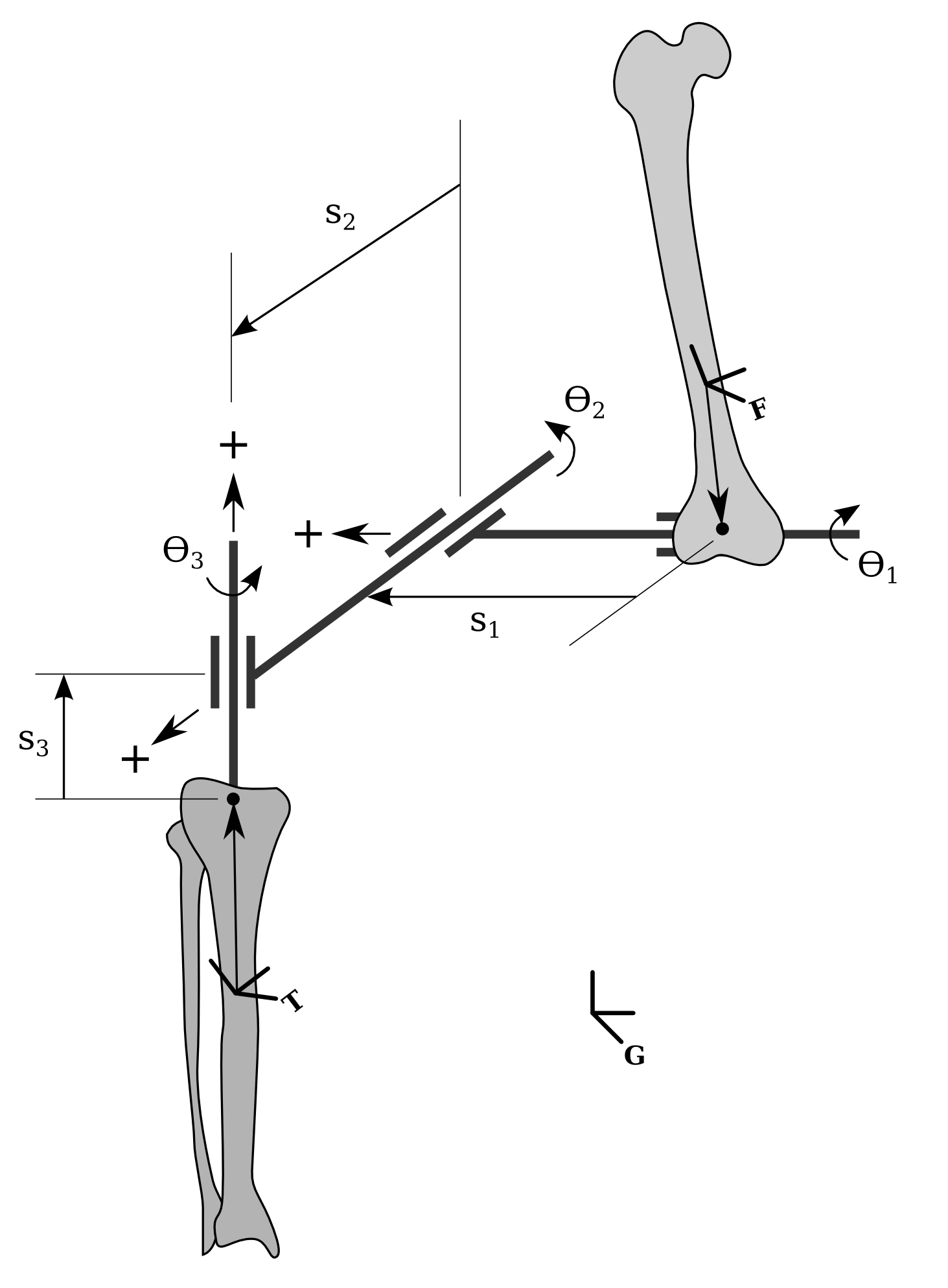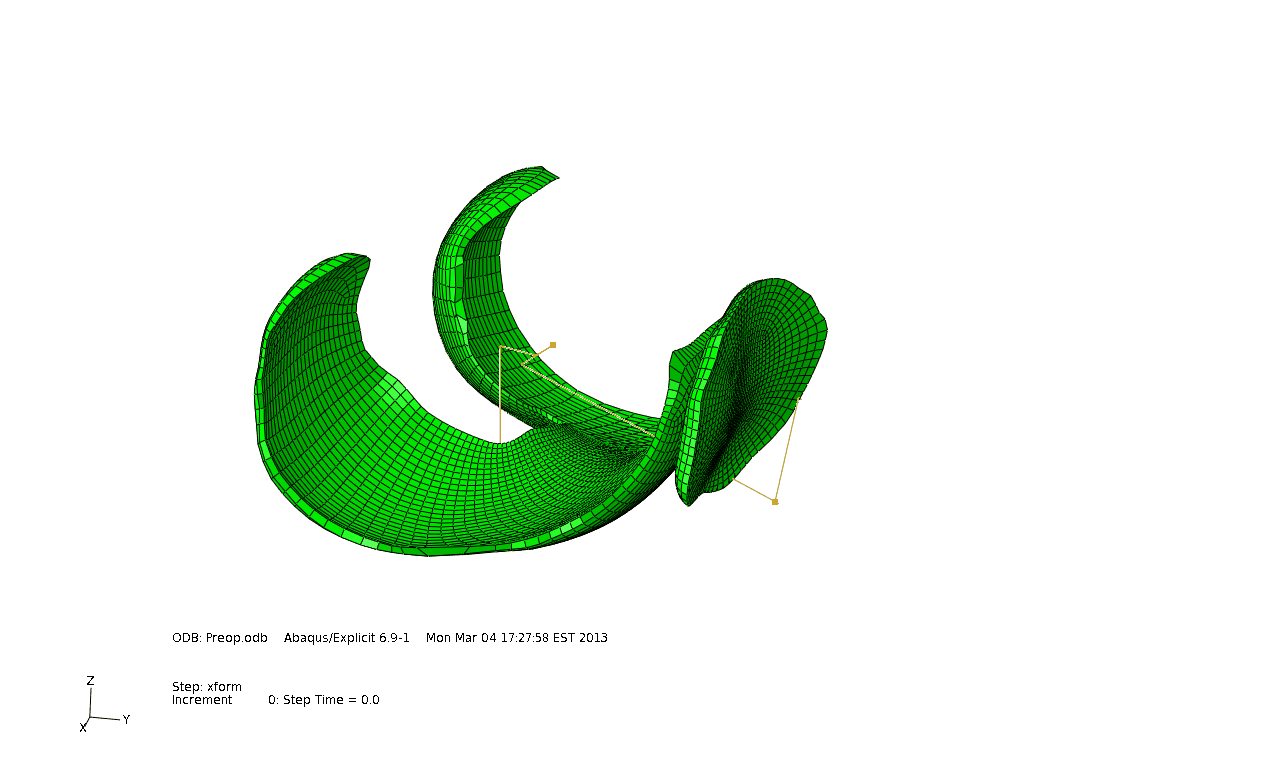Specifications
Description
Joint level simulations, especially in the knee, often rely on application and/or description of kinetic-kinematic response in commonly accepted joint coordinate systems (e.g. Grood and Suntay, JBME, 1983). This requires adoption of moving local coordinate systems that are assigned to a given body, e.g. the femur and tibia, to track overall rigid body motions as well as a means to "connect" two coordinate frames. In the case of Abaqus, we often use what's called "connector" elements to setup such frames. Their convenience is evident during model setup, prescription of joint level boundary conditions, as well as post-processing of the model results, where the connector outputs can be directly translated into clinically accepted descriptions of motion and/or loading.
In a Grood and Suntay convention, the following vector can be used to describe the position of an embedded tibial coordinate frame with respect to the femoral frame:
H = S1*e1 + S2*e2 + S3*e3
where e1, e2 and e3 are unit vectors along each of corresponding Si (i=1-3) magnitudes. e1 can be though of as the femoral flexion (FE) axis, while e3 is the internal-external (IE) rotation axis in the tibia and e2 is the common perpendicular between the two, i.e. the "floating axis."
In practice, all of the above can be combined to view the "connections" between two rigid bodies as a series of cylindrical joints:
If implemented in this way, the rotations, displacements and reactions about each of the cylindrical axes can be used to describe or apply the desired joint kinetics. For robustness, the embedded clinical axes (IE for the tibia or "T" frame above and FE for the femur or "F" frame) should have the capability to be defined within body specific local coordinate frames, which may or may not be the same as the global (model) coordinate frame. Essentially, this approach results in follower loads and/or kinematics that are a function of the relative motion between the two bodies.
For reference, the yellow lines in the following represent the cylindrical connectors implemented in a joint level analysis (frames were setup to describe both tibiofemoral and patellofemoral articulations). Displacements, rotations, and reactions (load and moment) for each joint can be specified or extracted in this setup. A "cylindrical" connector elements, which constrains motion between two nodes to a displacement and rotation about the primary axis (the yellow lines), were utilized.
Test Problem
To accomplish this feature request, we anticipate setting up a test problem with a known input-output relationship. This test problem could act as a surrogate for joint level simulations and could be as simple as a set of linear springs between two coordinate frames.
Estimated Completion
Late 2014
Progress
FEBio has the capability to connect rigid bodies in a parent-child relationship, which effectively defines joints between rigid bodies. We are looking into the possibility of expanding this capability to include local rigid body representations. We are finding some issues with the applications of moments on connected rigid bodies, but hopefully once this issue is resolved we hope to make good progress on this task.

